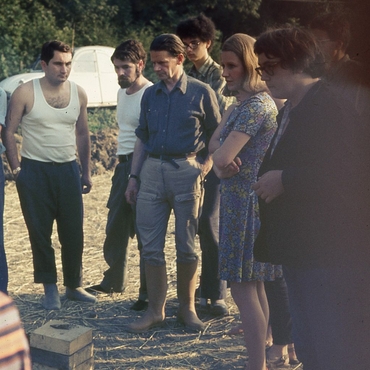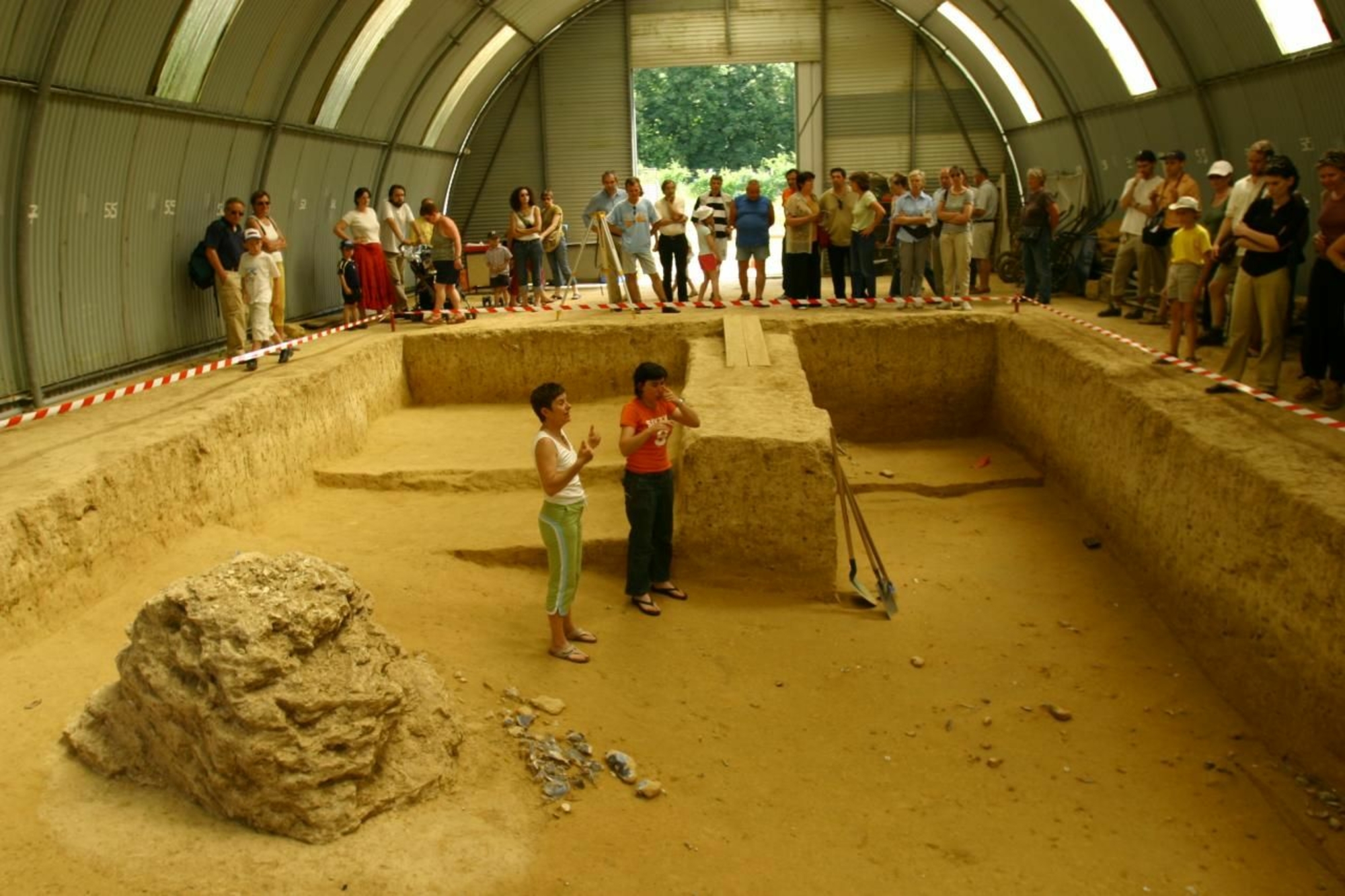
- Home
- Explore the site
- Étiolles, a centre for scientific innovation
- From the field to the laboratory: what happens?
Explored by students of André Leroi-Gourhan and by their students after them, Étiolles is one of the places where original innovation led to the methodological revolution begun by this great name in prehistoric research.
From ethnographic excavations...
When the excavations at Étiolles began, Leroi-Gourhan was publishing his first book about the excavations at Pincevent, advocating “ethnographic analysis” of prehistoric habitats. This required extensive and very meticulous excavation, followed by methodical surveying. Dentist’s instruments, tweezers, photographs and plans of every square metre were among the tools, today commonplace, used for this break from the expeditious sondages of before. Today, many digital methods, such as photogrammetry, are used in the crucial phase of surveying and archiving. At the planned excavations at Étiolles there is time to test new methods, and innovation is still necessary, with another revolution on its way: access for prehistorians, thanks to preventive excavations, to deeper depths, over larger surfaces, but still for short amounts of time.
…to (palaeo-)sociology and (palaeo-)history
Preventive archaeology is also partial to high-performance study methods. During and after excavations, Étiolles is the location of diverse tests, for example, on new radiocarbon dating protocols or on the restoration of landscapes using geology. The most original scientific breakthroughs consist of in-depth studies using flint refits, which have made it possible, for the first time for prehistory, to reconstruct social norms in knapping and evaluate individual achievements. In this way, we learn how access to materials for knapping, and even the choice of location where it was carried out, was regulated. These snippets of sociology are cross-referenced with stratigraphy to retrace a fragment of the history of the Magdalenian way of life.







